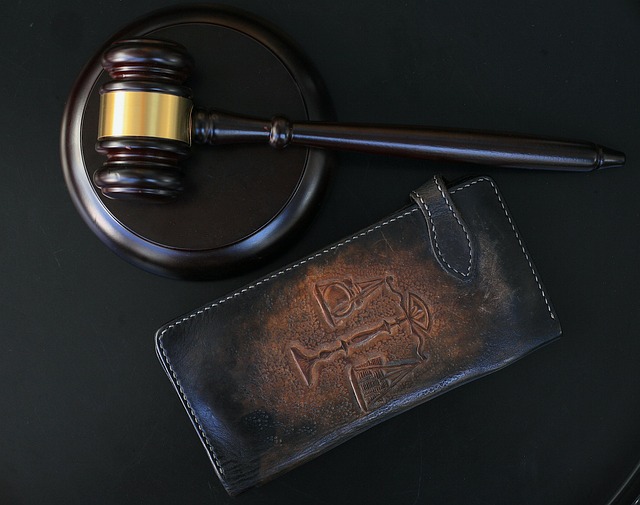Mail wire fraud, facilitated by digital communication, has become a prevalent crime where scammers impersonate legitimate entities to steal sensitive financial information through phishing emails, spear-phishing, and smishing. To protect yourself, recognize red flags like urgent requests for personal details and poor grammar. Implement robust security measures, verify communications independently, and enable multi-factor authentication. If you're a victim, swiftly file a personal injury claim with local law enforcement, maintain records of transactions, and seek legal counsel to build a strong case against fraudsters.
Mail wire fraud is a prevalent and insidious crime, exploiting individuals and organizations through deceptive communication. This article guides you through the intricate world of mail wire frauds, offering insights into their definition, tactics, and prevention strategies. We’ll help you identify risks, detect red flags, and understand crucial steps to protect yourself. Furthermore, we’ll provide a comprehensive overview on ‘How to File a Personal Injury Claim’ should you become a victim, ensuring your rights are safeguarded.
- Understanding Mail Wire Frauds: Definition and Common Tactics
- Who is at Risk: Identifying Vulnerable Individuals and Organizations
- Detecting Fraud: Recognizing Red Flags in Your Communications
- Protecting Yourself: Security Measures to Prevent Mail Wire Frauds
- File a Claim: Steps to Take After Falling Victim to Mail Wire Fraud
Understanding Mail Wire Frauds: Definition and Common Tactics

Mail wire fraud is a sophisticated criminal activity that has become increasingly prevalent in today’s digital age. It involves the use of electronic communication, such as emails or text messages, to deceive individuals and gain unauthorized access to their financial information. Fraudsters often pose as legitimate entities, like banks or government agencies, to trick victims into revealing sensitive data like passwords, PINs, or account numbers. Once they obtain this information, they can quickly drain bank accounts, steal identities, or use the data for other fraudulent activities.
Common tactics include phishing emails that appear to be from a respected organization, asking recipients to click on malicious links or download harmful attachments. Another strategy is spear-phishing, where fraudsters target specific individuals with personalized messages to gain their trust. They might also employ smishing, sending text messages containing malware or requesting urgent action and personal information. Understanding these tactics is crucial when it comes to protecting yourself from such schemes, especially while navigating all stages of the investigative and enforcement process for a potential How to File a Personal Injury Claim, where awareness can help deter initial attempts at fraud.
Who is at Risk: Identifying Vulnerable Individuals and Organizations

Mail wire frauds are a significant concern for individuals and organizations alike. Anyone with access to digital communication channels can fall victim to these sophisticated scams. Vulnerable targets often include the elderly, those with limited digital literacy, small businesses, and philanthropists or political communities with substantial financial resources. Scammers target these groups by impersonating trusted entities, such as banks or government agencies, using urgent language to prompt immediate action.
Identifying at-risk individuals requires vigilance and a keen eye for detail. For instance, if someone receives an unexpected wire transfer request or an email demanding personal information, it’s crucial to verify the sender’s identity independently. This includes checking official contact details through respective business channels or reaching out to known associates of the supposed sender. Additionally, those who frequently engage in international transactions or handle substantial funds for his clients must implement robust security measures and stay informed about emerging fraud trends.
Detecting Fraud: Recognizing Red Flags in Your Communications

Recognizing red flags is a critical step in detecting mail wire fraud. Scammers often use sophisticated tactics to trick individuals into sending money or sharing sensitive information. Keep an eye out for unexpected emails or phone calls asking for personal or financial details, especially if they create a sense of urgency or demand immediate action. Another common sign is misspellings and poor grammar, as professional organizations typically maintain consistent communication standards. If you receive a request that seems unusual or too good to be true, it might be a scam.
Knowing how to file a personal injury claim can also help in combating fraud. When dealing with potential fraudulent activity, document every interaction, save all communications, and report any suspicious behavior to the relevant authorities. An unprecedented track record of success in mail wire fraud cases can be a powerful tool in identifying legitimate attempts versus manipulative schemes. Ensure that you understand the respective business practices and rights to protect yourself from falling victim to these cunning deceptions.
Protecting Yourself: Security Measures to Prevent Mail Wire Frauds

Protecting yourself from mail wire fraud involves implementing robust security measures. Firstly, always verify the authenticity of any communication claiming to be from a bank or financial institution through independent channels. Check your official account statements regularly for any unusual transactions and report them immediately to your bank. Using multi-factor authentication (MFA) adds an extra layer of security, ensuring that even if scammers obtain your login credentials, they still need access to your physical device.
Moreover, be cautious when sharing personal information online or over the phone. Legitimate organizations will rarely ask for sensitive details like PINs or full account numbers via email or text messages. If you’re unsure about a request, contact the organization directly using known and verified contact details to confirm its legitimacy. Remember, staying vigilant and proactive in your security practices is crucial in protecting against mail wire fraud, ensuring peace of mind and achieving extraordinary results when it comes to your financial well-being.
File a Claim: Steps to Take After Falling Victim to Mail Wire Fraud

If you’ve fallen victim to mail wire fraud, it’s crucial to take immediate steps to protect yourself and recover any losses. The first step is to file a personal injury claim with the appropriate authorities. This typically involves contacting your local law enforcement agency to report the crime and gather evidence such as transaction records, emails, and any communication with the fraudsters. It’s also essential to keep detailed records of all financial activities related to the case.
Once reported, you’ll need to cooperate fully with investigators while seeking legal counsel. An experienced attorney can guide you through the process of avoiding indictment if applicable and help build a strong case against the perpetrators. Remember, whether dealing with corporate or individual clients, the goal is to hold the responsible parties accountable and seek justice.
Mail wire fraud is a serious threat that can have devastating financial and emotional consequences. By understanding the common tactics, identifying vulnerable individuals, and recognizing red flags in communications, you can significantly reduce your risk. Implementing robust security measures and promptly filing a claim if you’ve fallen victim are crucial steps in protecting yourself and recovering from such incidents. Remember, staying vigilant and proactive is key to navigating this digital landscape safely, especially when it comes to safeguarding your financial information and personal well-being.






